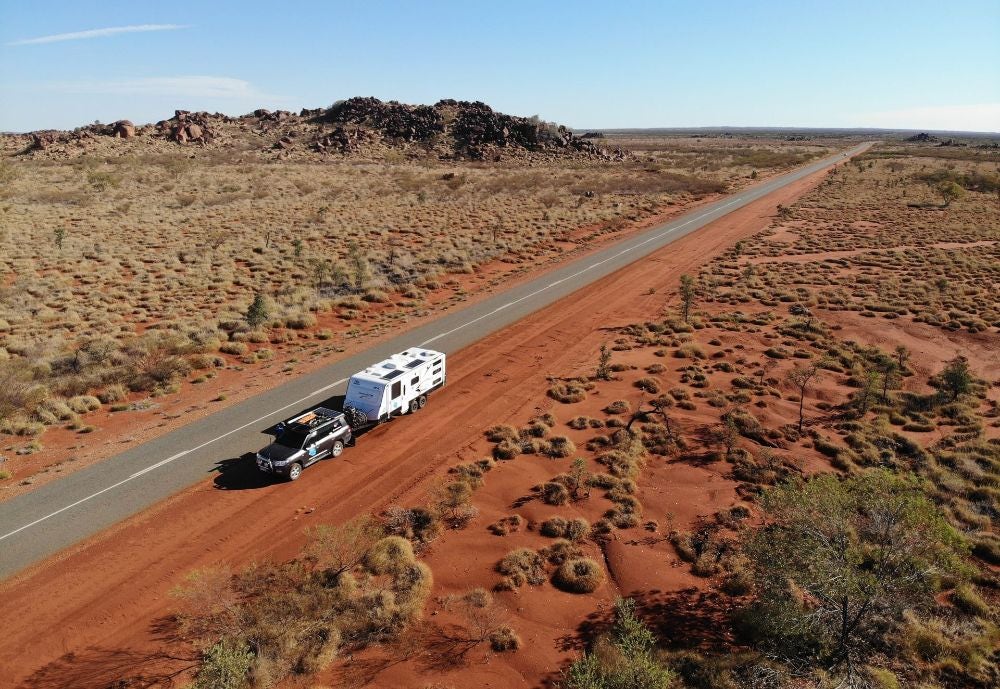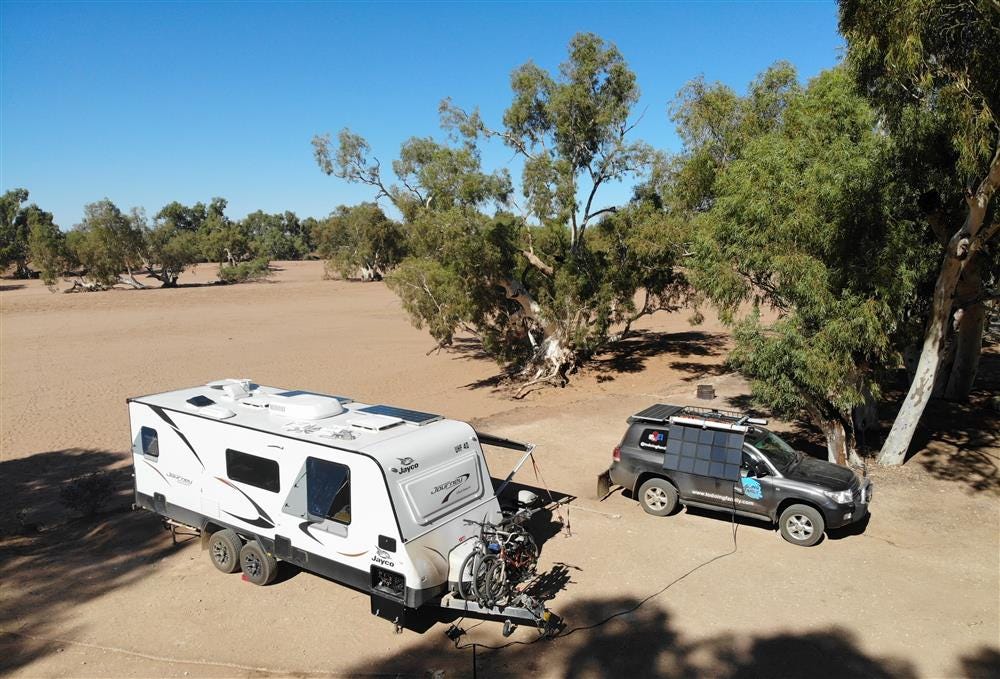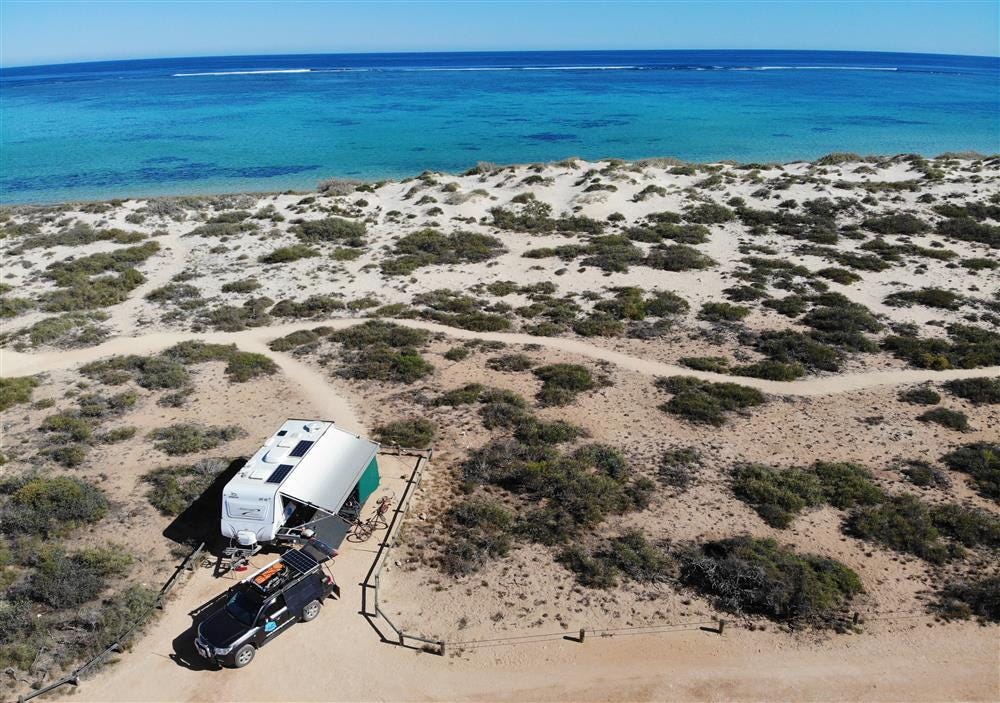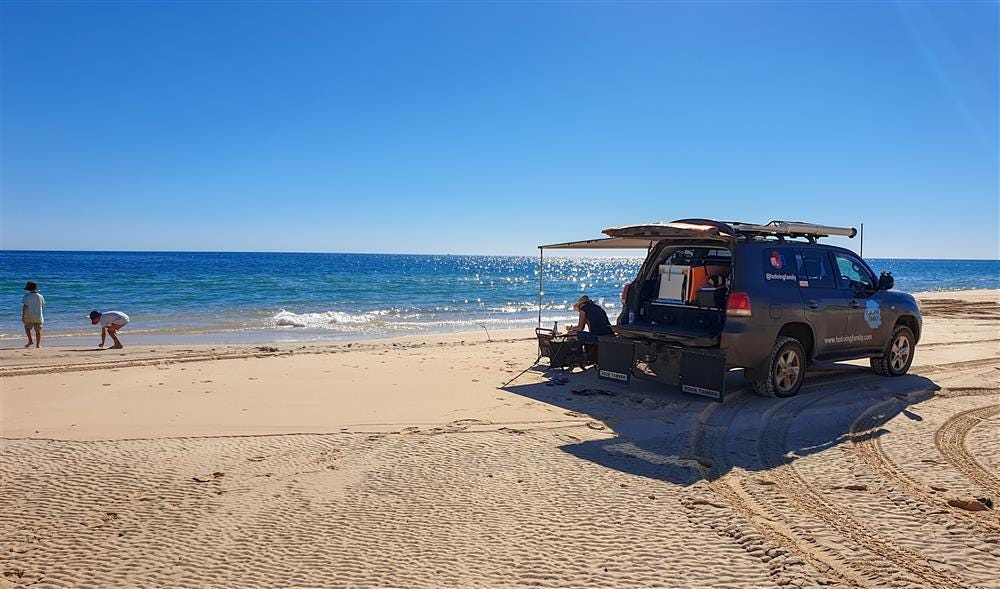

According to The Todoing Family, maintaining power on the road takes a mixture of good planning and learning on the job. And after six months of offroad travel, they offer their advice to those who are wanting to prepare their dual battery setups for a life without plugging in.
Making every Amp count
We’ve been on the road full time for 6 months now and have really started to get the hang of it. The biggest thing that is always on our mind? Power! When living in your caravan, camper or RV for any length of time, you really need to make every amp count.


When we set off from home, our Jayco Journey had 2 x 100AH AGM batteries and 2 x 160W solar panels as standard. We knew as a family of 5 we were going to need to be careful in our power usage, especially considering we had a 218L Compressor style fridge. These fridges are huge, which is great for a big family, but they are extremely power hungry.
Amps in, but more importantly Amps out, became very important for us on the road. We super charged our system with an additional 100ah battery, plus a portable REDARC solar blanket and a 150W solar panel fixed to the car. This gives us flexibility and additional power input, but it doesn’t stop there.


Here’s how we make every Amp count during our adventures, hopefully sharing some ideas for your next Caravan, camper or RV journey.
Campsite alignment
When you first pull into a campsite, have a look around. Are there any trees or other structures that might cast shade over your fixed solar panels? Can you align your solar panels so that they get a full day of sun, East to West? Getting this right is the first step, and we’re always checking the sun’s path, the compass and our surroundings upon arrival. A full day in the sun is absolutely golden for getting ahead of the game.


Get it set up, early
Once we have worked out which way the sun rises, we like to get our solar blanket out, ready to go early. The more of the sun you can catch the better, and often overnight we will set up our solar blanket pointing in the right direction. We usually use our car for positioning. This means once that sun comes up, we start to get those Amps into the system immediately, even if we have a little sleep in!
Charge your devices during the day, not overnight!
This is one of the biggest adjustments from being at home with a constant 240V supply. At home, you often get discounts overnight for off peak. But on the road, the free stuff comes during the day when the sun is high. As your batteries start to fill, your battery management system might start to slow down the recharging of your batteries, essentially wasting power input opportunity. It’s time to load up those phones, tablets, computers or other devices you might have for work, school or just recording your many adventures.
Standby costs power, too
When we first got the caravan a lot of people said to us, watch those standby devices. We thought, surely that has no impact, but it really does. It especially shows up overnight when you look around the caravan at an almost airport runway array of lighting. The TV has two little red lights, many other devices and appliances do too. Unplug them if you can, they add up, and it really does help you make every Amp count!
Lights are a big culprit!
Take a look at your caravan’s lighting. Is it LED? You are ahead of the game if so. If not, make sure you change it over as the difference is staggering. In saying that, even with LED, be careful what you use. Our caravan has as standard 18 lights. More than some small homes! Many of these use 3-4 amps per hour, which is basically what you might get in the morning as an input, cancelling out those gains you made by getting your panels out early. Some lights have lower light settings too. Try to use the minimal light you need, which has the added bonus of attracting less insects too!
Choose your fridge wisely
There are a few different options when it comes to fridges, but the big decisions are basically upright or chest style, compressor or 3 way. We have an upright fridge with a compressor motor, and this thing really chews up the power. It will use something in the vicinity of 3 – 5 amps on average per hour, sometimes more depending on usage and temperature. Every time that fridge gets opened, a heap of cold air falls flat to the floor. We also have a compressor split combi fridge, and this is more efficient. We try to keep regularly accessed items in this as this keeps the cold air in easier. Drinks, snacks and lunches go in this fridge first. A 3 way fridge certainly has its benefits, and in average weather will definitely save you power. But often they are smaller and struggle in the heat. A little bit of give or take and personal preference is required here.


Have multiple options for power
Solar is great, but sometimes it might be a cloudy day. We’ve avoided going for a generator, mainly due to size, weight and it’s not exactly pleasant for you or your neighbours to hear it running from 8am to 8pm each day. Your car is a great source of power, but you need the right way to harness it. A DCDC charger is gold, pulling amps from your car to recharge your batteries. We have one in the car to charge our standalone auxillary battery, and plan to put one in the caravan soon to fill these batteries up faster too. Modern cars provide nominal power, a DCDC is like a vacuum pulling down extra amps to charge your batteries faster.
Making every amp count is incredibly important for any extended stay, journey or travel. Do you have any tips on how you make every amp count? We’d love to hear from you below.
